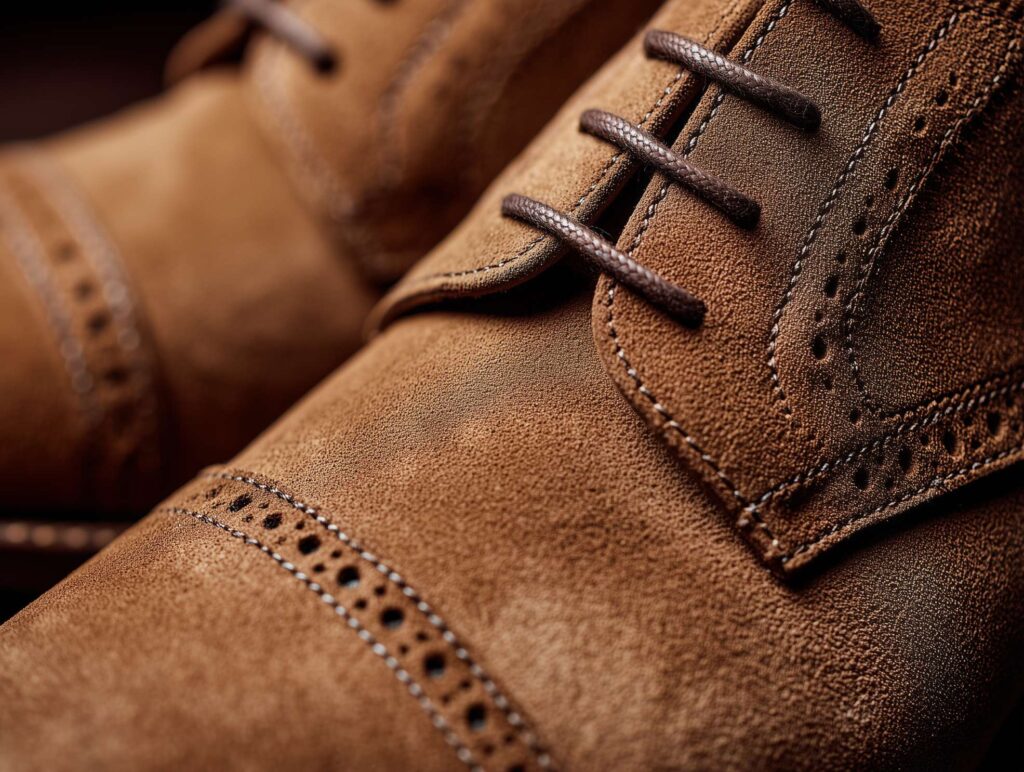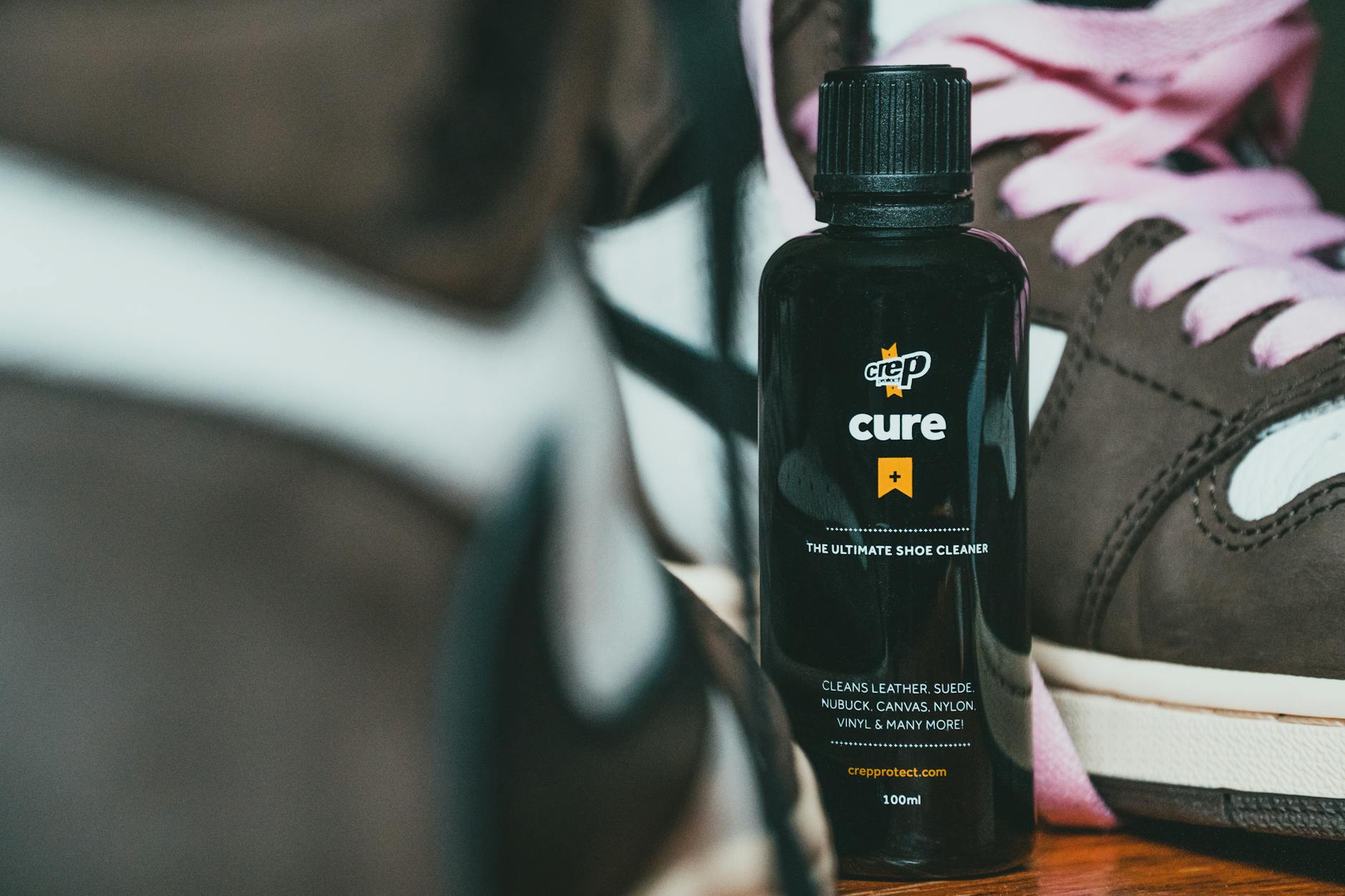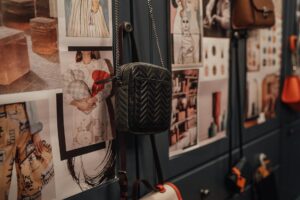Key takeaways
- Action: run a four-stain, matched-swatches test before approving any cleaner for stock or returns.
- Decision rule: choose branded foam or shampoo cleaners for low-risk, high-resale items; use DIY only for emergency or low-value inventory.
- Pitfall: skipping a matched swatch can hide small color shifts that multiply across many pairs; always document before/after photos.
Test plan and why it matters
We measure three outcomes: stain removal, nap recovery, and color stability. Use four matched swatches of the same suede, apply controlled stains (oil, salt/water, ink, surface scuff), treat per label or DIY method, air dry, then rate results and photograph. The photo log helps returns and supplier QA.
[Experience Note] In busy shops, teams skip matched swatches. That raises return risk. Include a folded test card with kits so customers can try a corner first.
Printable protocol (quick card)
- Make 4 matched swatches from the same material and dye lot.
- Apply controlled stain: 1 drop oil, 1 tsp salt solution, small ink mark, surface dirt.
- Treat with product following label instructions or with a documented DIY method.
- Air dry, photograph under consistent light, then score: removal / nap / color change.
Insert this protocol into supplier sampling requests and supplier pilot POs as a pass/fail checklist.
Jason Markk guide and Nike’s suede advice describe household handling steps useful when you document procedures for staff.
See our QC notes for case-study level checks and our note on mixed materials when uppers mix suede with textiles.
Comparison table: branded vs DIY (summary)
| Product | Effectiveness | Risk to dye | Dry time | Procurement note |
|---|---|---|---|---|
| Saphir (suede shampoo / gommadin) | Good on dress suede, gentlest nap recovery | Low (formulated for dyed nap) | Moderate air dry | Higher unit price; position as premium care |
| Jason Markk (foam kit) | Strong on sneaker suede and mixed uppers | Low–moderate; test dark dyes | Fast (foam wipes/rinses) | Retail-friendly kits; good branding |
| Reshoevn8r (foam) | Versatile on mixed materials | Moderate; test for dye migration | Fast | Good for bundled offers |
| DIY: white vinegar (dilute) | Useful for salt/water marks | Moderate; may alter tone on dark dyes | Fast | Low cost; variable results |
| DIY: isopropyl alcohol | Can remove dye transfer or spot ink | Higher risk of color loss and dry feel | Fast | Flammable; request SDS if supplied commercially |
| DIY: baking soda / cornstarch | Best first response for fresh oil | Low physical risk; may need repeat | Overnight recommended | Very low cost; use as pre-treatment |
Product notes, procurement questions and QC
Saphir tends to be the gentlest on delicate nap. Jason Markk and Reshoevn8r offer foam cleaners that control contact time well and rinse clean. Foam cleaners are easier to standardize in a retail training flow because they limit soak time and mess.
Questions to ask suppliers before you buy
- Provide sample kits and a small private-label instruction insert for pilot runs.
- Share SDS and VOC content; isopropyl alcohol and other solvents are flammable—request hazard data sheets and storage guidance from suppliers. (OSHA hazard communication).
- Confirm recommended maximum contact time on dyed suede and any dye migration warnings.
- Ask for lot-level traceability and shelf-life for foam or wet shampoos.
[Experience Note] In stores, include a folded test swatch and short pictogram steps in each kit. This reduces misuse and returns.
For lab-level colorfastness or crocking concerns, request AATCC or equivalent test reports from the supplier. AATCC documents describe industry colorfastness practices. (AATCC).
When uppers mix materials, check each substrate. See our guide on nubuck vs suede and identify pu leather before approving a common cleaner.
FAQ
Which suede cleaner is safest for dyed dress suede?
Branded suede shampoos formulated for delicate nap are typically safest because they balance cleaning agents and wetting without aggressive solvents. Always run a matched-swatches test before approving for inventory or returns.
How do foam cleaners compare to rinse shampoos for suede?
Foam cleaners limit soak time and are easier to standardize in retail training. Rinse shampoos can be effective but need controlled drying and more staff training to avoid over-wetting.
What minimal tests should a retailer require from a supplier?
Require a four-stain matched-swatches report (oil, salt/water, ink, surface scuff), SDS, recommended contact times, and any colorfastness results. Keep photographic logs for sample approvals and returns.
What are low-risk DIY steps for emergency stains?
For fresh oil, absorb with baking soda or cornstarch and brush out after several hours. For salt marks, a dilute white vinegar spot (test first) can help; see general guidance from major care pages. (Nike suede care).






